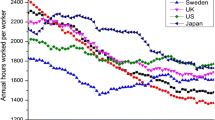
Overview
- Addresses one of the most urgent and critical problems of our civilization
- Highlights the importance of global environmental stability
- Shows humanity its real place in the natural environment
- Emphasizes the gravity of the ecological threat before us
- Demonstrates the need to move from modern industrial thinking to new ecological thinking
- Takes a holistic approach to the global economic crisis
- Contends that sustainability is achievable only on a global scale and cannot be regionalized or isolated
- Portrays the economic, social and ethical consequences of the violation of biospherical laws
- Includes supplementary material: sn.pub/extras
Part of the book series: Springer Praxis Books (PRAXIS)
Part of the book sub series: Environmental Sciences (ENVIRONSCI)
Access this book
Tax calculation will be finalised at checkout
Other ways to access
About this book
2007 marked the 20th anniversary of the G.H.Brundtland Commission report that broke new ground by addressing the issue of sustainable development as a means of avoiding an ecological catastrophe. This led to a multitude of political declarations, documents and scientific articles while Agenda 21 – adopted in 1992 in Rio de Janeiro – has been accepted by the governments of more than 100 countries. Sadly, however, this has not prevented certain recent dangerous trends, nor have the wider public, journalists, business circles or politicians grasped the urgency of the problem. It is therefore important to make humanity understand its real place in the natural environment and the gravity of the ecological threat before us.
The exclusive role of natural ecosystems is a key factor in the maintenance of the biospheric equilibrium. The current global crisis is largely caused by their dramatic decline by 43% in the past hundred years. Ignoring the immutable laws and limitations which determine the existence of all living things in the biosphere could lead humanity to an ecological catastrophe. This book presents the ecological, demographic, economic and socio-psychological manifestations of the global crisis and outlines the immutable laws and limitations which determine the existence of all living things in the biosphere.
Similar content being viewed by others
Keywords
Table of contents (20 chapters)
-
Front Matter
-
Civilization in crisis: On the edge of an abyss
-
Front Matter
-
-
Civilization teetering over the abyss of crisis (conclusion)
-
Front Matter
-
-
The world community: Politicians and scientists in search of a solution
-
Front Matter
-
-
Sustainable development: Between complacency and reality
-
Front Matter
-
-
On the scale of a scientific approach
-
Front Matter
-
Reviews
From the reviews:
"This timely, well-organized book provides intriguing insights into the 21st-century plight of the human-built and natural worlds. Danilov-Danil’yan and Losev (both, Russian Academy of Sciences) and Reyf (German journalist) argue that the direct dependence of people on critical ecosystem services requires … social, psychological, and economic trends that underpin the problem. The book’s six parts aptly reveal the breath and depth of the analysis … . Summing Up: Highly recommended. All levels/libraries." (P. R. Pinet, Choice, Vol. 46 (11), July, 2009)
Authors and Affiliations
Bibliographic Information
Book Title: Sustainable Development and the Limitation of Growth
Book Subtitle: Future Prospects for World Civilization
Authors: Victor I. Danilov-Danil’yan, Kim S. Losev, Igor E. Reyf
Series Title: Springer Praxis Books
DOI: https://doi.org/10.1007/978-3-540-75250-9
Publisher: Springer Berlin, Heidelberg
eBook Packages: Earth and Environmental Science, Earth and Environmental Science (R0)
Copyright Information: Springer-Verlag Berlin Heidelberg 2009
Hardcover ISBN: 978-3-540-75249-3Published: 12 January 2009
Softcover ISBN: 978-3-642-09451-4Published: 30 November 2010
eBook ISBN: 978-3-540-75250-9Published: 27 March 2009
Series ISSN: 2945-7475
Series E-ISSN: 2945-7483
Edition Number: 1
Number of Pages: XIX, 262
Topics: Sustainable Development, Environmental Management, Climate Change, Environment, general, Environmental Economics


